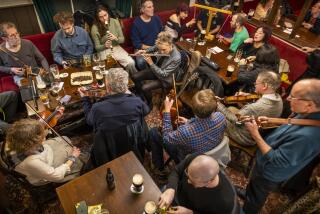Down a pint at the Queen’s Head, Cat Head or Old Saracen’s Head
Visitors to Britain are often struck not just by the profusion of pubs -- about one for every 1,000 people -- but by their colorful names, such as the Barley Mow, the Eagle and Child and the Two Mile Oak.
Historical figures and royalty provided many of the names: the Duke of Wellington and the Queen’s Head, for example. Others require little explanation, such as the Horse and Coaches, the Cat Head and the Boot and Slipper.
But some of the monikers are of intriguing, and unresolved, origin. Take the Elephant and Castle, the name of a tavern (as well as a subway station and general area) in south London.
There are those who argue that the name is a corruption of “Infanta de Castile,” a reference to a Spanish princess. Others trace it to a medieval guild of metalworkers who took as their emblem the drawing of an elephant with what looks like a castle on its back.
In Shakespeare’s “Twelfth Night,” the character Antonio declares: “In the south suburbs at the Elephant / Is best to lodge,” which some think is a sly reference to the Elephant and Castle in south London. But that is probably an anachronistic reading.
Still, imaginations can run free upon encountering pub signboards advertising the Wig and Miter, the Dumb Post, the Merry Harriers, the Swan With Two Necks, the Flemish Weaver, the Crown and Trumpet, the Staff of Life, the Old Saracen’s Head, the Bishop on the Bridge and the Green Dragon.
-- Henry Chu
More to Read
Sign up for The Wild
We’ll help you find the best places to hike, bike and run, as well as the perfect silent spots for meditation and yoga.
You may occasionally receive promotional content from the Los Angeles Times.






